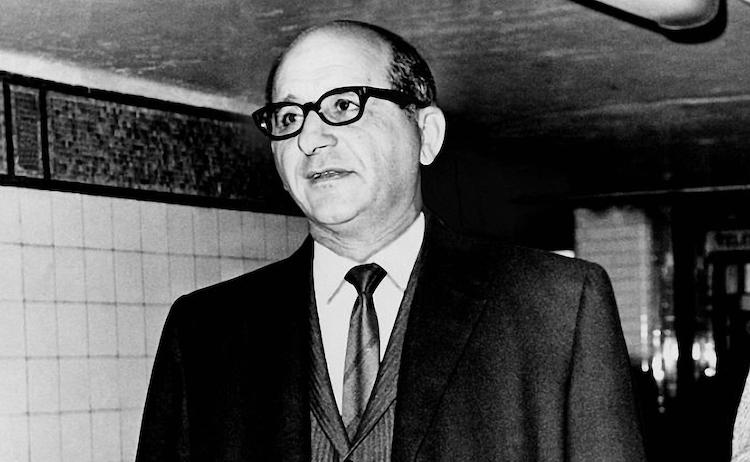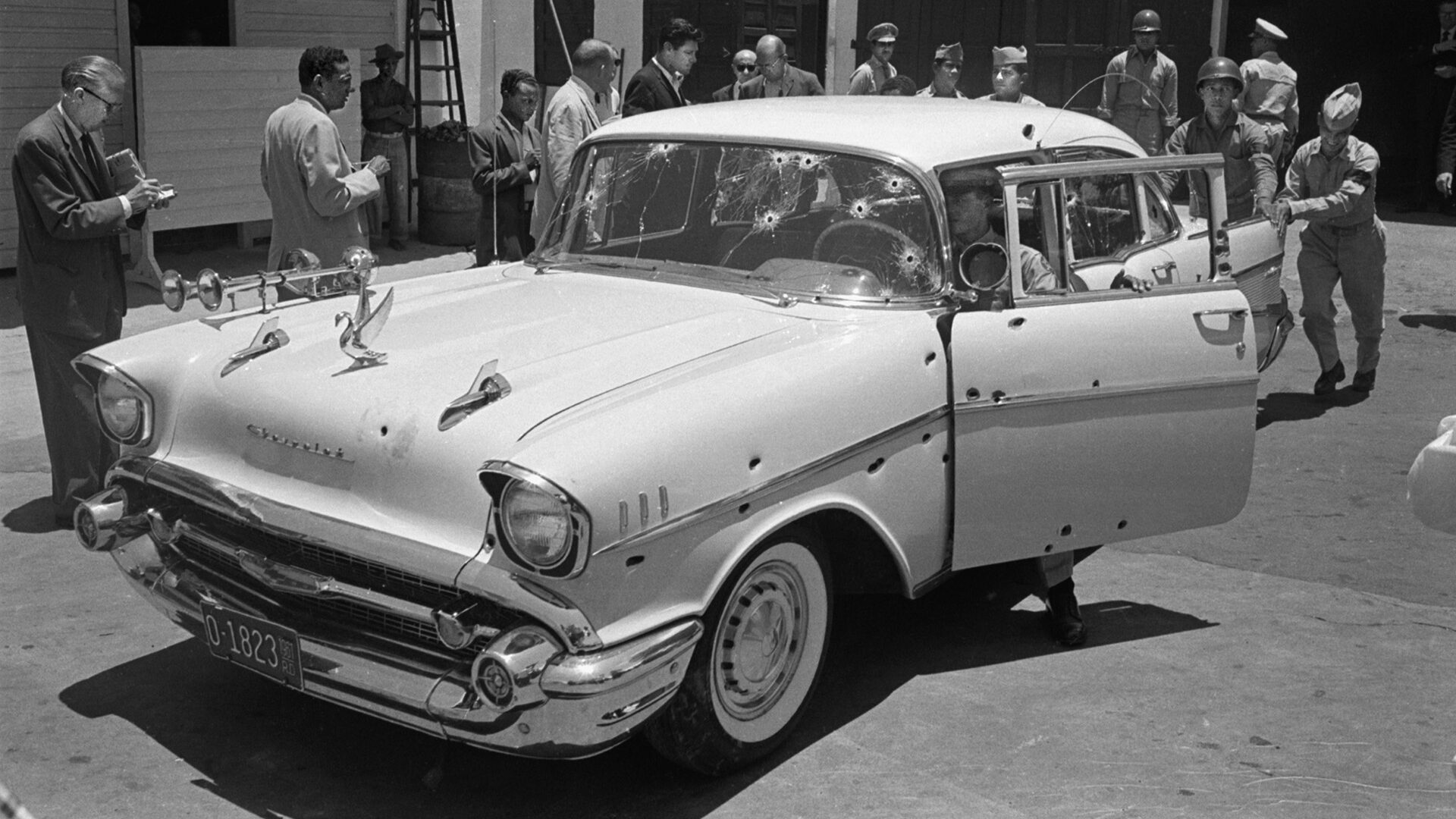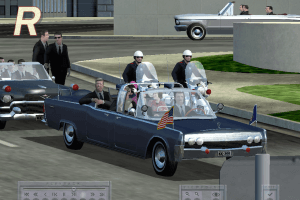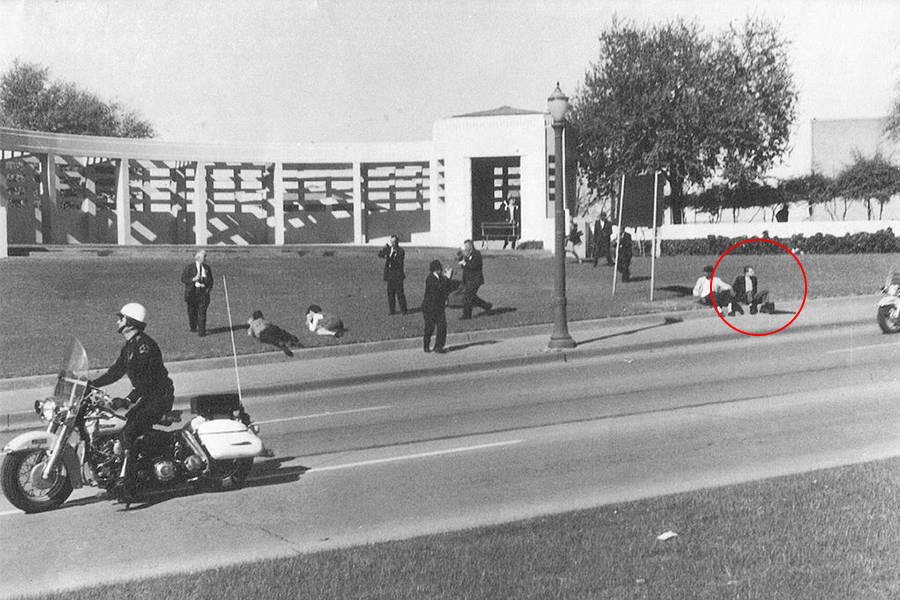Before we get into this, I do want to clarify, everything I’m about to say is complete satire, I’m just a guy who makes jokes on the internet. I am healthy, of sound body and mind, a competent swimmer and have no intentions of killing myself anytime soon.
Ok, so who actually shot President Kennedy?
#1: Lyndon B Johnson

Before President Kennedy was elected, Johnson had also been in the running for the Democratic Party but was only nominated as Vice President. Johnson specifically requested of Kennedy that he still had partial power as Texas Senator, not wanting the practically only showy job of Vice President. The night before the shooting, Kennedy and Johnson allegedly “had words”. There were also rumours circulating that he could’ve been dropped off the 1964 Presidential Ballot. A witness came forward by the name of Madeleine Brown, who claimed she had been at a party with Johnson, Nixon and Hoover the night before the assassination. She claimed that Johnson had whispered in her ear, claiming that:
After tomorrow, those Kennedys will never embarrass me again. That’s no threat, that’s a promise.
What Johnson allegedly whispered into Madeleine’s Ear, 1963
However, Johnson was being observed the whole evening so this interaction may never have even occurred. Other than these possible motives, there is no other proof that Johnson had Kennedy shot.
#2: Russia
:max_bytes(150000):strip_icc()/Khrushchev-UN-3000-3x2gty-5b88511446e0fb00501fcf5f.jpg)
Russia seems like a very obvious choice. America and the Soviet Union were arch enemies at the time and one of the alleged assassins had Soviet ties. But, isn’t this a little too obvious? If Russia actually did kill Kennedy and were found out, it would cause all out nuclear annihilation so would be incredibly risky so is highly unlikely.
#3: The Mob

Kennedy allegedly had many ties to the mob, most famously with Sam Giancana, head of the Chicago mob. Giancana had allegedly worked with Kennedy’s father in the bootleg alcohol business back during the Prohibition Era. It was also reported by a multitude of news outlets that Giancana also rigged the 1960 election in Kennedy’s favour. The two also shared a mistress in Judith Exner. In 1975, Giancana was supposed to testify about some “CIA related assassinations” before he was shot 7 times in his home in Illinois by an intruder, despite a police presence guarding the home.
Kennedy also may have had ties to Jimmy Hoffa, through an alleged shared mistress, Marilyn Monroe, who it is rumoured that Hoffa may have had killed. Hoffa was under heavy scrutiny by the Attorney General, Robert F Kennedy, John’s brother, who formed the “Get Hoffa” squad. Hoffa was convicted in 1964 for tampering with a jury. It is rumoured that when Kennedy was shot, Hoffa cheered and whooped. He also allegedly raised the American Flag on top of his building from half mast, which is protocol when a President dies, to full mast. Hoffa also mysteriously vanished in 1982.
#4: The CIA

In the twilight of Eisenhower’s presidency, he authorised an invasion of Cuba, in order to overthrow the communist dictator of the nation, Fidel Castro. This operation would be led by CIA officials. Kennedy, taking a firmly anti-Castro stance, decided to go ahead with the invasion on April 4th, 1961. By the 17th, ground troops needed air support where they were pinned down at the Bay of Pigs as their planned uprising within Cuba had failed. Kennedy refused to authorise the air support. The Bay of Pigs was a disaster with thousands of lives lost. In public, Kennedy claimed all responsibility for the catastrophe
We got a big kick in the leg and we deserved it. But maybe we’ll learn something from it.
Kennedy speaking on the Bay Of Pigs, ‘A Thousand Days’ by Arthur M. Schlesinger
However, according to biographer Richard Reeves, Kennedy blamed the CIA for allegedly trying to set him up to make him look bad, making the public hate him, even allegedly saying that he wanted to:
“splinter the C.I.A. in a thousand pieces and scatter it to the winds.”
Kennedy (allegedly) speaking on the CIA
Eisenhower had also planned an attempted assassination against Castro and Dominican Republic Communist leader, Rafael Trajillo. Kennedy allegedly requested that if such a thing were to happen, the US must have plausible deniability, whilst he publicly opposed such efforts. In 1961, Trajillo was killed.

In October of 1962, Soviet Missiles were spotted in Cuba and for the next 13 days, the world sat on the precipice of nuclear annihilation. Once the crisis was averted, rumours began to spread that Kennedy had struck a deal with the Soviet Premier, Nikita Kruschev to not invade Cuba as long as he kept their missiles out. People began to suspect that Kennedy was soft on Communism.
Kennedy publicly denounced America’s involvement in Vietnam and Laos.
In the final analysis, it is their war. They are the ones who have to win it or lose it. We can help them, we can give them equipment, we can send our men out there as advisers, but they have to win it, the people of Vietnam, against the Communists… But I don’t agree with those who say we should withdraw. That would be a great mistake… [The United States] made this effort to defend Europe. Now Europe is quite secure. We also have to participate—we may not like it—in the defense of Asia.
Kennedy being interviewed for CBS
There were rumours that he staged the coup in South Vietnam on November 1st, 1963, only 3 weeks before he was killed, a coup which deposed the anti-communist dictator. Many rumours circulated that he was planning on pulling military advisors out of Vietnam before his death.

In fact, many of his policies advocated for peace not just with South East Asia but also with the USSR.
All of that threatened to make the CIA obsolete. Kennedy was a threat to the CIA’s existence and they knew it. The Warren Commission, set up by Hoover and Johnson, also featured as a prominent member of the committee was Allen Dulles, Director of the CIA up until 1961, after which he was dismissed by Kennedy after the Bay of Pigs. Another member of this Committee was Gerald Ford, a Michigan Representative and later became the president of the United States. Another CIA member was allegedly elected to keep Kennedy safe. After failing such a simple task in the most spectacular way possible, he was promoted to Director of the CIA in 1976 and later was elected President of the United States. That man was George H. W. Bush.
In 1991, Oliver Stone released a film called JFK, discussing the possible conspiracy behind the assassination of Kennedy. The film was so influential that the CIA was demanded to release all files regarding the Kennedy Assassination. A lot of these files are still yet to be released and a lot of those that have been released are heavily redacted.

In 2004, a video game was released called “JFK Reloaded”. In the game you are put into the position of Lee Harvey Oswald in the South East Corner of the Texas School Book Depository. The objective of the game is to get as close to the actual shots that hit the President as possible, in order to prove the Warren Commission’s findings. To incentivise people to play the game, the developers had a prize pot wherein if someone got to 100%, or 1,000 points, they would receive a $100,000 cash prize. It has been 20 years since the game’s release and the highest score ever achieved in the game is currently only 75% and the only cash reward received from the game was to a 16 year old boy in Paris and the money he received was only a tenth of the promised prize.

Ultimately a select few people knew what actually happened that day, and the majority of them are dead. Could it be Russia? Could it be Giancana’s Mob? Or could it be the CIA? But I always want you to remember, if you ever think, “What, no, the government wouldn’t do that!” Oh yes. Oh yes they would.














